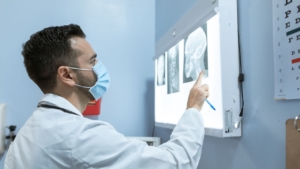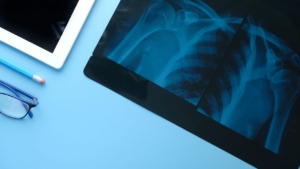Key Takeaways
- Radiation shielding compliance is crucial for protecting patients and staff.
- Adhering to imaging facility regulations is essential for maintaining safety standards.
- Proper shielding prevents harmful radiation exposure and ensures compliance with regulations.
- Regular audits and training are necessary for ongoing compliance.
- Failure to maintain or update shielding can lead to cracks or wear, compromising safety and resulting in non-compliance with regulations.
Are you confident that your imaging facility meets the necessary safety standards? Radiation shielding compliance is a critical component of running a successful imaging facility and adhering to imaging facility regulations is essential for protecting both staff and patients.
Whether you’re building a new facility or upgrading an existing one, ensuring that your space complies with healthcare safety solutions is vital to maintaining high standards of care.
Compliance with radiation shielding standards is more than a checkbox to tick. It’s about protecting people and ensuring long-term safety. Let’s explore why radiation shielding is crucial and how your facility can ensure full compliance with industry standards.
Why Radiation Shielding Compliance is Essential
Ensure Compliance to Prevent Harmful Radiation Exposure
Radiation is used extensively in medical imaging, from X-ray machines to CT scans, and while it is invaluable in diagnosing patients, it poses certain risks. Without proper radiation shielding compliance, patients and staff may be exposed to harmful levels of radiation.
Regulatory bodies have established imaging facility regulations to minimize this risk and to ensure that imaging services remain both effective and safe.
These regulations dictate the placement and type of radiation barriers, ensuring that imaging rooms are shielded appropriately based on the type of equipment used. For example, an X-ray room may have lead-lined walls, whereas a CT room may require even more robust shielding.
Regular updates to these regulations mean that facilities must stay informed to ensure they remain compliant. Failure to comply can lead to operational shutdowns or, worse, health hazards for staff and patients.
Comply with Regulations to Protect Patients and Staff
Healthcare professionals are always looking for ways to improve patient care, and that extends to reducing unnecessary radiation exposure. Shielding measures, when done correctly, offer a layer of protection that complements the advanced technology used in imaging.
From lead aprons for patients to structural shielding within the walls and floors of the facility, healthcare safety solutions play a pivotal role in ensuring the well-being of everyone involved.
Moreover, regular maintenance of imaging equipment and continuous monitoring of radiation levels further enhance safety. Proper ventilation and safe disposal of radiation materials are also aspects covered by imaging facility regulations.
When a facility is compliant, it shows its commitment to safety, which builds trust with patients and staff alike.
Implement the Right Healthcare Safety Solutions
The first step in ensuring radiation shielding compliance is choosing the right healthcare safety solutions that meet regulatory standards while fitting the facility’s specific needs. Every imaging facility is unique, and the requirements can vary depending on the size, layout, and types of imaging equipment in use.
One of the most common solutions is lead-lined barriers. These barriers are built into the walls, floors, and ceilings to prevent radiation from escaping the room. In some cases, portable lead shields are used to protect patients and staff during specific procedures.
However, more than simply installing these measures is required. Facilities must ensure that all shielding is placed according to the latest imaging facility regulations to ensure maximum effectiveness.
Additionally, facilities must keep up with advancements in technology. Modern shielding materials are lighter, more effective, and easier to work with than traditional lead solutions. This is especially important in environments where flexibility is required, such as in mobile imaging units or modular healthcare spaces.
Conduct Regular Compliance Audits and Training
Maintaining compliance is not a one-time event. Imaging facilities must conduct regular audits to ensure that all shielding remains effective and that any new equipment or changes in layout still comply with the necessary imaging facility regulations.
Audits should be performed by certified radiation safety professionals who can identify any gaps in compliance and recommend corrective measures.
In addition to audits, ongoing staff training is vital. All personnel working in or around imaging facilities should be well-versed in healthcare safety solutions and the protocols they must follow to avoid exposure.
Training programs can include everything from the proper use of personal protective equipment (PPE) to understanding the layout of radiation-shielded areas within the facility. This ensures that staff are equipped to handle everyday tasks while minimizing radiation risks.
Common Pitfalls in Radiation Shielding Compliance
Overlook Facility Layout and Room Function
One common mistake a facility makes is not considering the overall layout of the space when designing shielding solutions. For instance, the positioning of equipment within a room can greatly impact how effective the shielding will be.
The last thing a facility wants is for radiation to escape into areas that are not properly protected because of poor planning. This is why careful consideration must be given to both current and future needs during the design and construction phases.
Neglect of Upkeep and Upgrades
Another pitfall is neglecting the regular maintenance and updating of shielding materials. Even though shielding solutions may last for years, wear and tear can reduce their effectiveness over time. For instance, lead-lined walls may develop cracks, or portable shields may become damaged.
Regular inspections and upgrades are necessary to ensure continued compliance with imaging facility regulations.
Similarly, as technology advances, newer and more efficient healthcare safety solutions are becoming available. Keeping up with these advancements ensures that your facility not only remains compliant but also benefits from improved safety and workflow efficiency.
Radiate Confidence in Your Compliance with Spectrum Medical Imaging Co. by Your Side
Radiation safety is a critical aspect of running a successful imaging facility. By implementing the right healthcare safety solutions, regularly auditing for compliance, and training staff, facilities can meet stringent imaging facility regulations and create a safer working environment.
Don’t wait until compliance becomes an issue. Take proactive steps to ensure that your facility is fully equipped with the latest radiation shielding technology and safety protocols.
Partner with Spectrum Medical Imaging Co. Our experienced team of professionals can help you navigate the complexities of radiation safety, protect your facility, safeguard your patients, and ensure the well-being of your staff for years to come. To get started, contact us at 310-828-6161 today!




